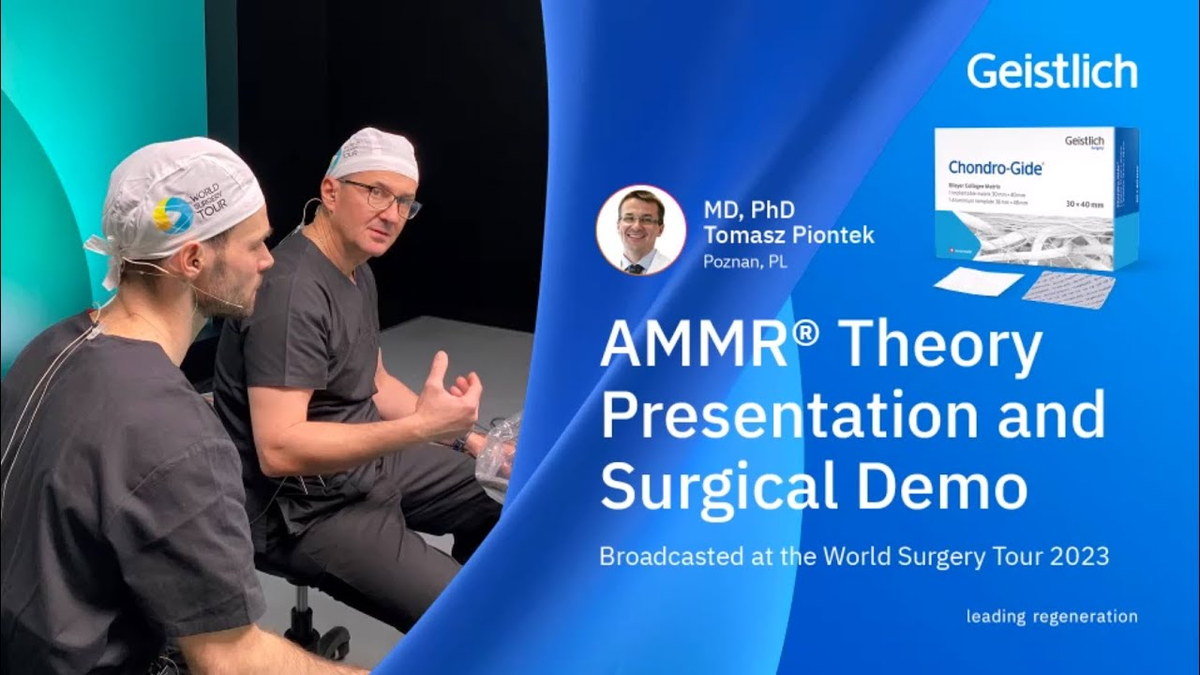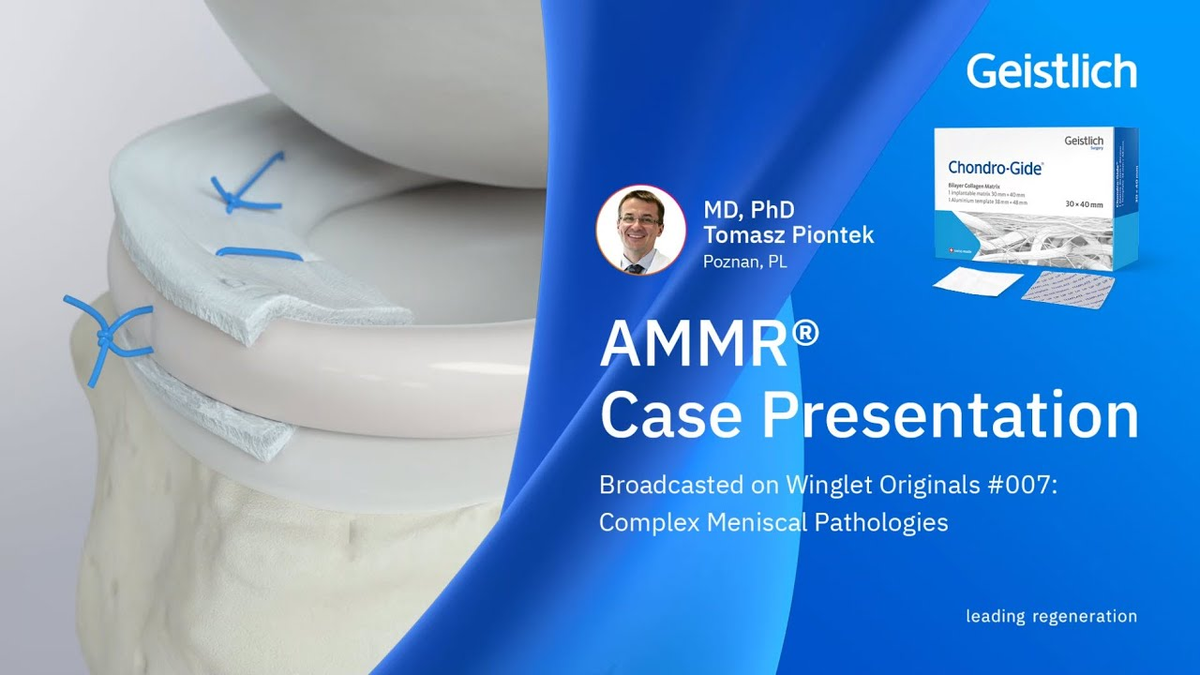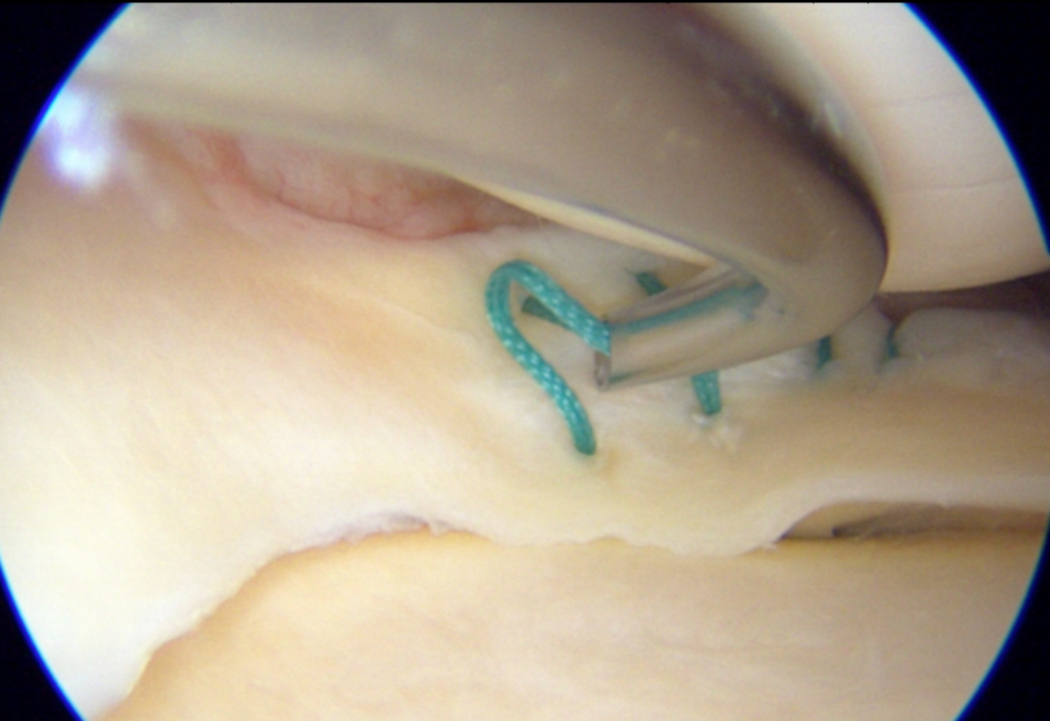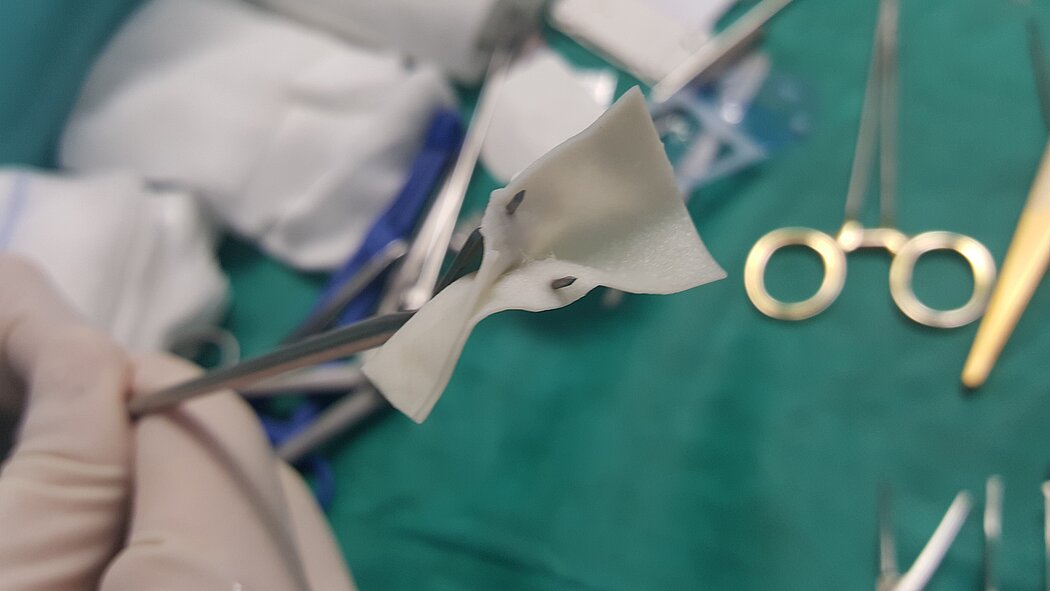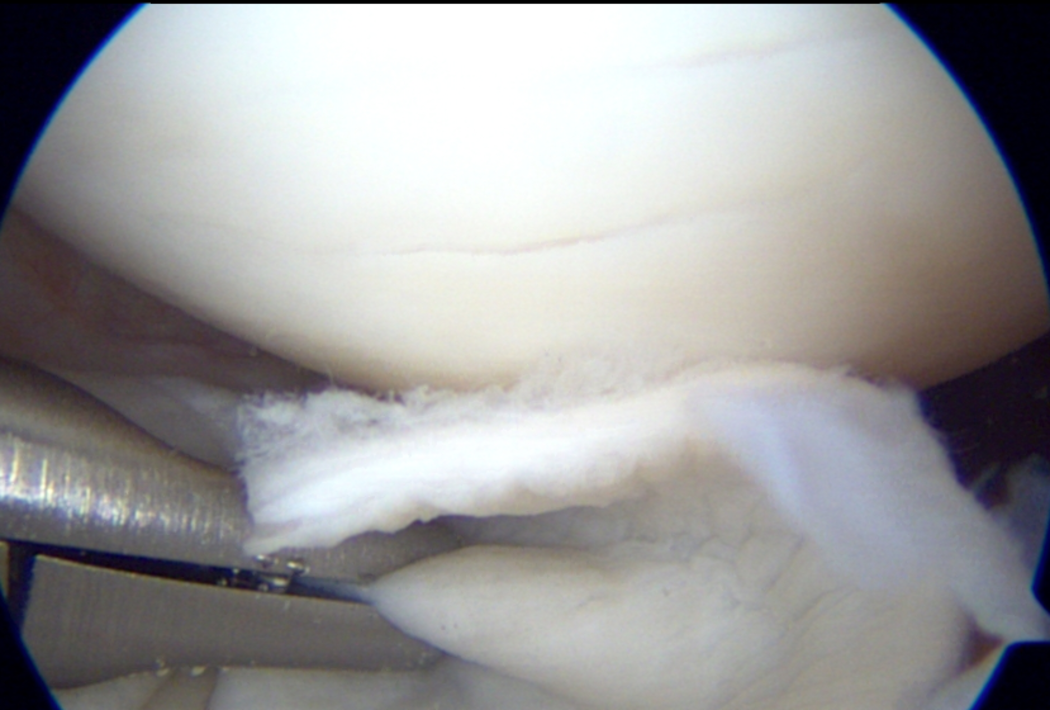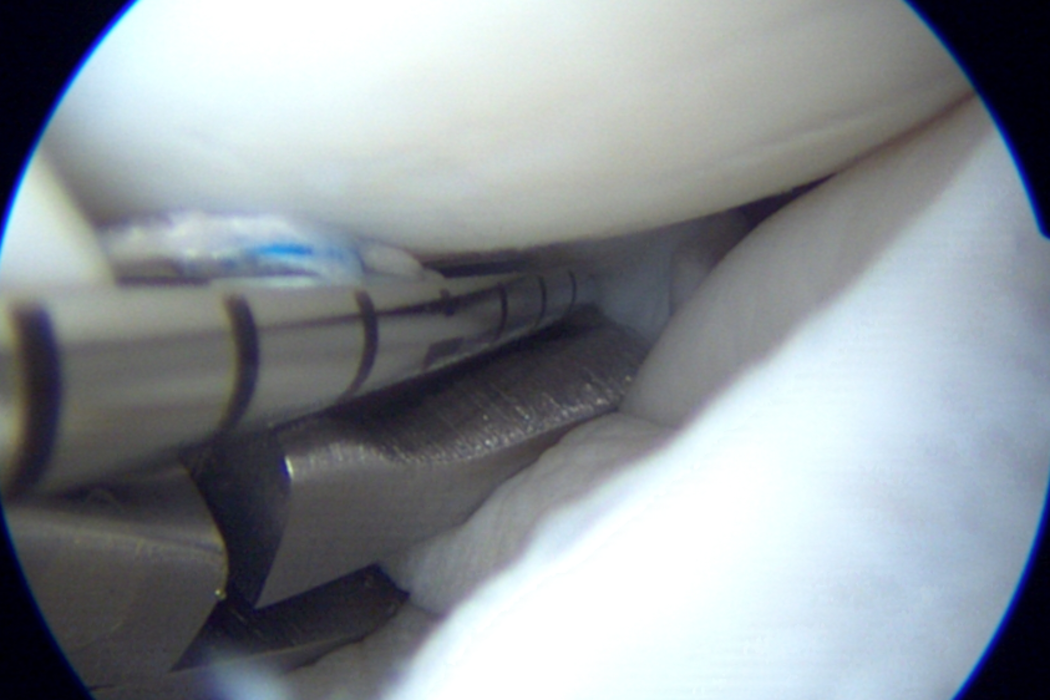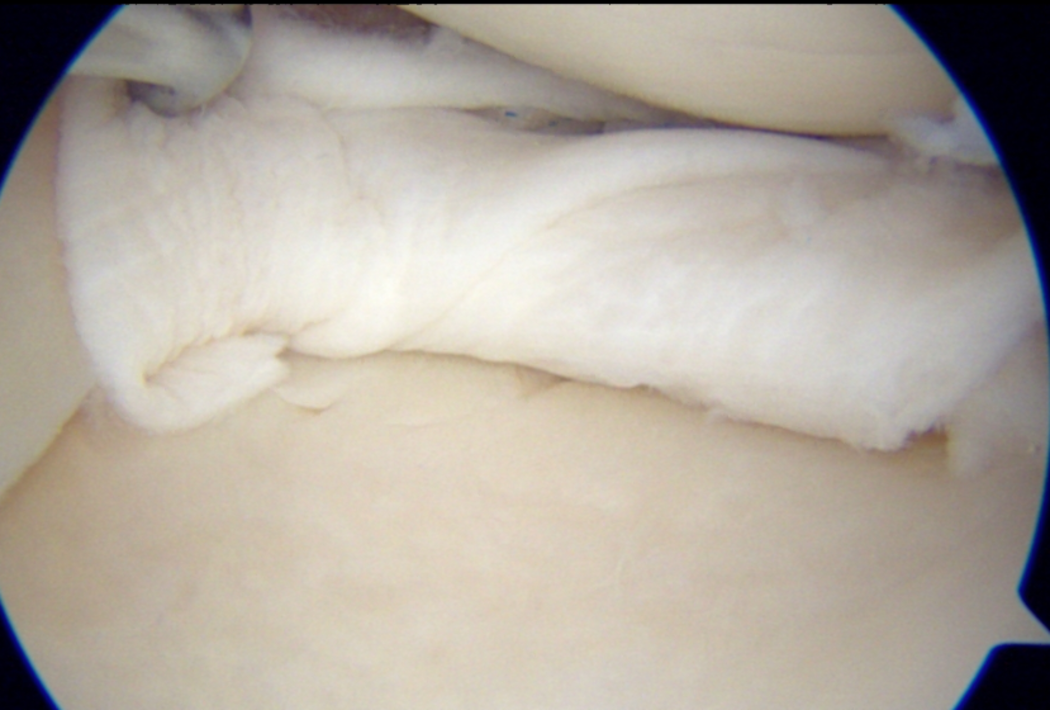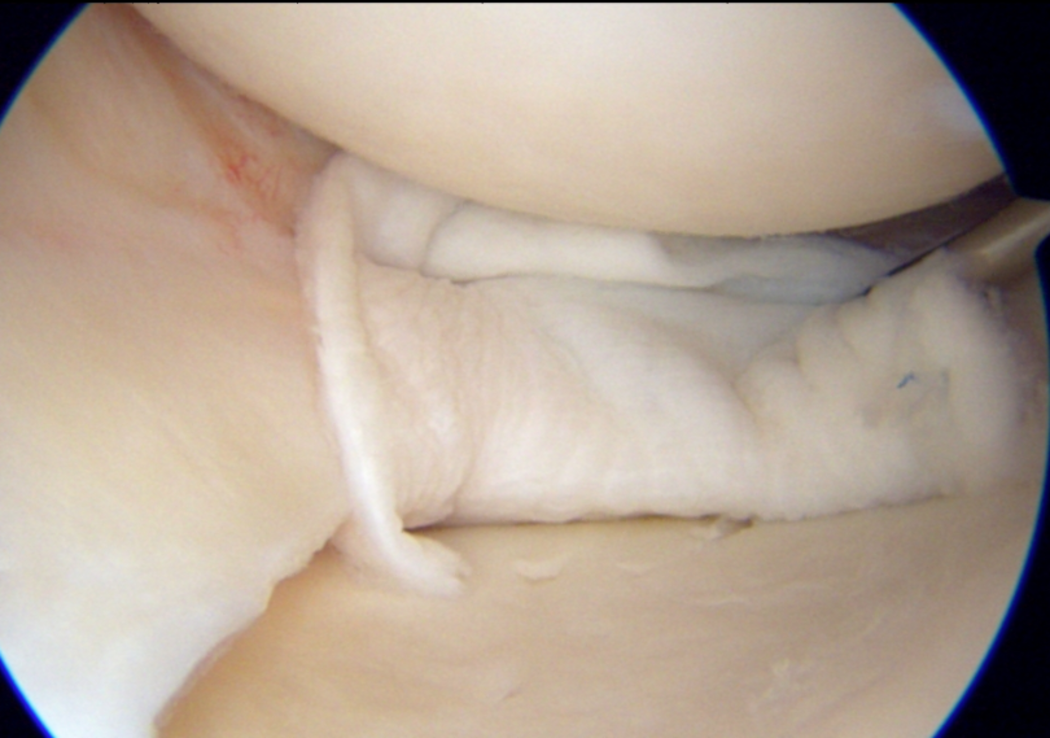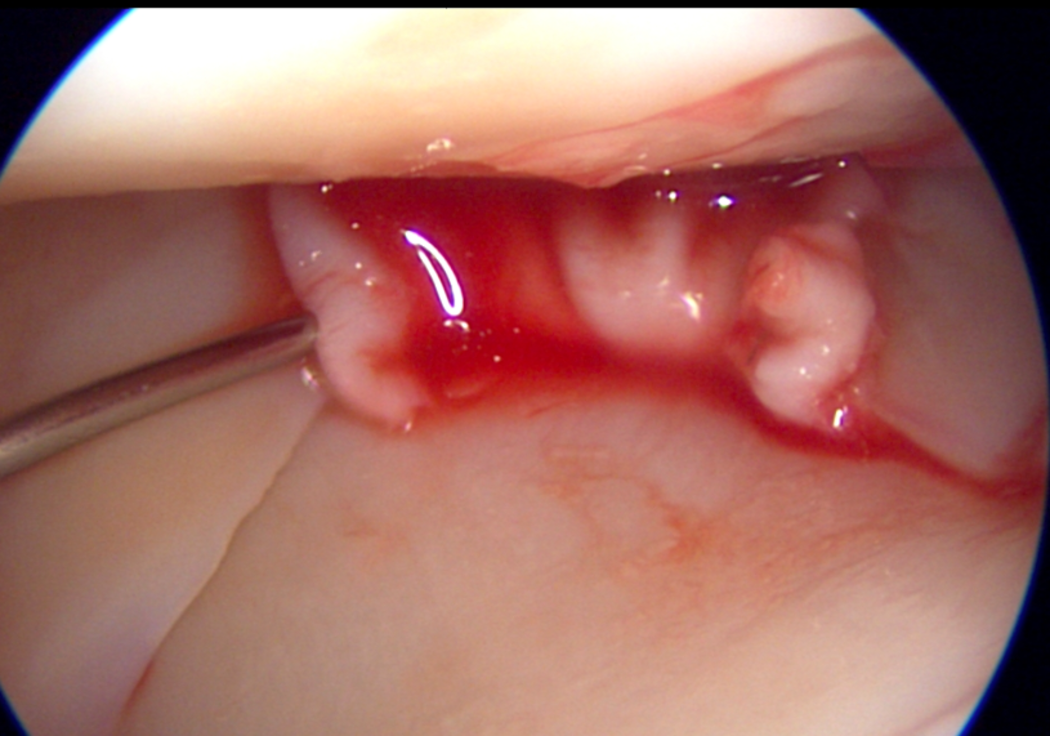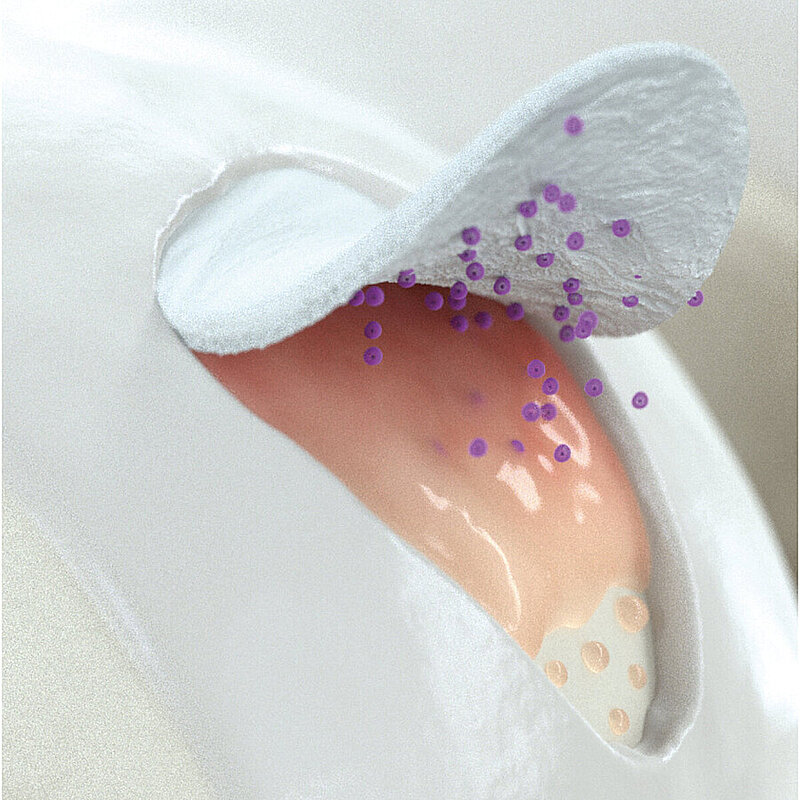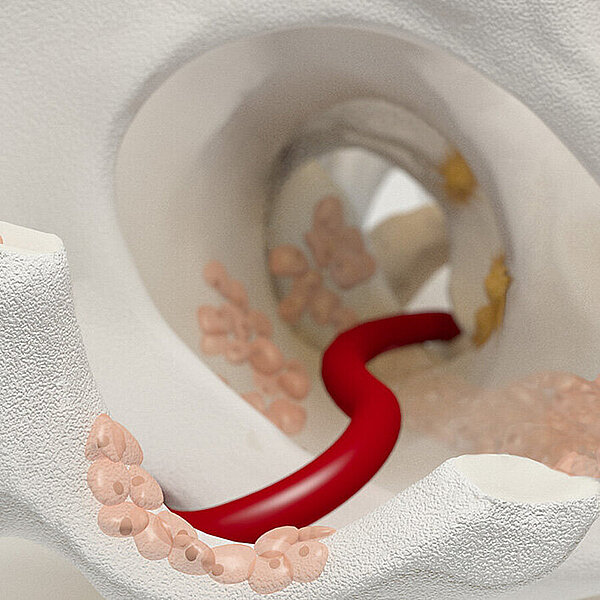AMMR®
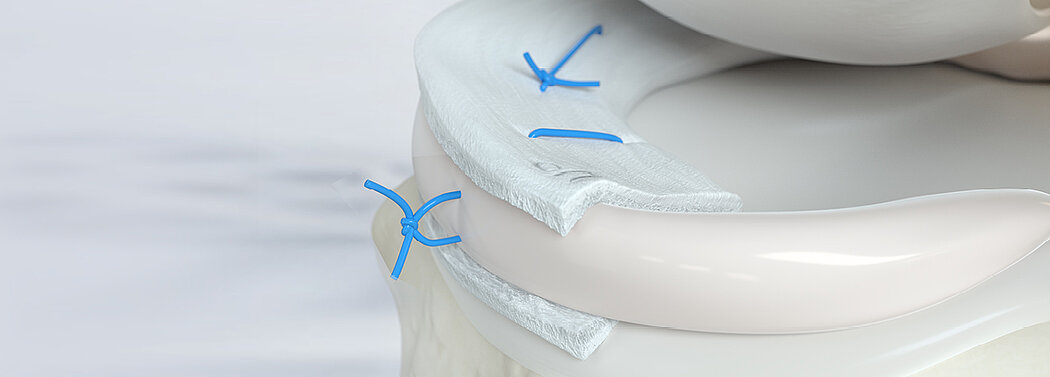
There is agreement that Meniscal lesions should if ever possible be treated by preserving as much meniscal tissue as possible since partial or total meniscectomy lead to degenerative changes in the knee after meniscectomy. Patients who underwent meniscus resection in a relatively young age often suffer from early osteoarthritis and might need to undergo a total joint replacement later in their life.1
The concept of arthroscopic meniscus-wrapping was developed and first introduced in 2003 by Roland P. Jakob (CH) at Kantonsspital Fribourg, Switzerland, and published in 2010 with the technique and first results.2 After a follow-up of 2.5 years 90% of the 30 patients included maintained their treated menisci. The autors concluded that the technique seemed to improve the chances of healing but that it was technically demanding.
Tomasz Piontek (Poznan, PL) invested further work in this technique which was named Arthroscopic Matrix-based Meniscus Repair AMMR®.
In the AMMR® technique, the damaged meniscus is wrapped with the Chondro-Gide® membrane. The smooth side of the bilayer collagen membrane is facing the joint space, whereas the rough, porous side faces the meniscus surface.1,3 At first, the meniscus is stabilized preferably with suture techniques. Then, the membrane is fixed around the stabilized meniscus using suture techniques and in the end, bone marrow aspirate is injected between the meniscus and the membrane. Alternatively, microfracture of the intercondylar notch can be performed to bring cells and growth factors to the stabilized tear site. The Chondro-Gide® membrane forms a protected «biological chamber», where the additional biologic factors can support the healing process.3
The 5-year results of this AMMR® technique of Tomasz Piontek have been assessed in a study with 39 patients. The patients were assigned in two groups: those with isolated meniscal repair and those with meniscal repair combined with simultaneous ACL reconstruction. The AMMR® treatment showed good mid-term clinical and MRI-based outcomes for complex meniscal tears as well as a favorable survival rate.4
In 2023, the 10 year outcomes of the same cohort have been published. For the 10-year follow-up, 23 patients were available. Significant improvements in the IKDC and Lysholm subjective scores could be shown compared to the pre-operative baseline scores.5
References
- Piontek, T., et al. All-arthroscopic technique of biological meniscal tear therapy with collagen matrix. Pol Orthop Traumatol. 2012 Jul 31;77:39-45.
- Jacobi, M., Jakob, R.P. Meniscal Repair: Enhancement of Healing Process. In: Beaufils, P., Verdonk, R. (eds) The Meniscus. 2010. Springer, Berlin, Heidelberg. https://doi.org/10.1007/978-3-642-02450-4_17
- Piontek, T., et al. Complex Meniscus Tears Treated with Collagen Matrix Wrapping and Bone Marrow Blood Injection: A 2-Year Clinical Follow-Up. Cartilage. 2016 Apr;7(2):123-39. doi: 10.1177/1947603515608988. Epub 2015 Nov 30.
- Ciemniewska-Gorzela, K., et al. Complex Meniscus Tears Treated with Collagen Matrix Wrapping and Bone Marrow Blood Injection: Clinical Effectiveness and Survivorship after a Minimum of 5 Years' Follow-Up. Cartilage. 2021 Dec;13(1_suppl):228S-238S. doi: 10.1177/1947603520924762. Epub 2020 Jun 1
- Bąkowski, P., et al. Meniscus repair via collagen matrix wrapping and bone marrow injection: clinical and biomolecular study. Int Orthop. 2023 Feb 11. doi: 10.1007/s00264-023-05711-2. Epub ahead of print. PMID: 36764942.
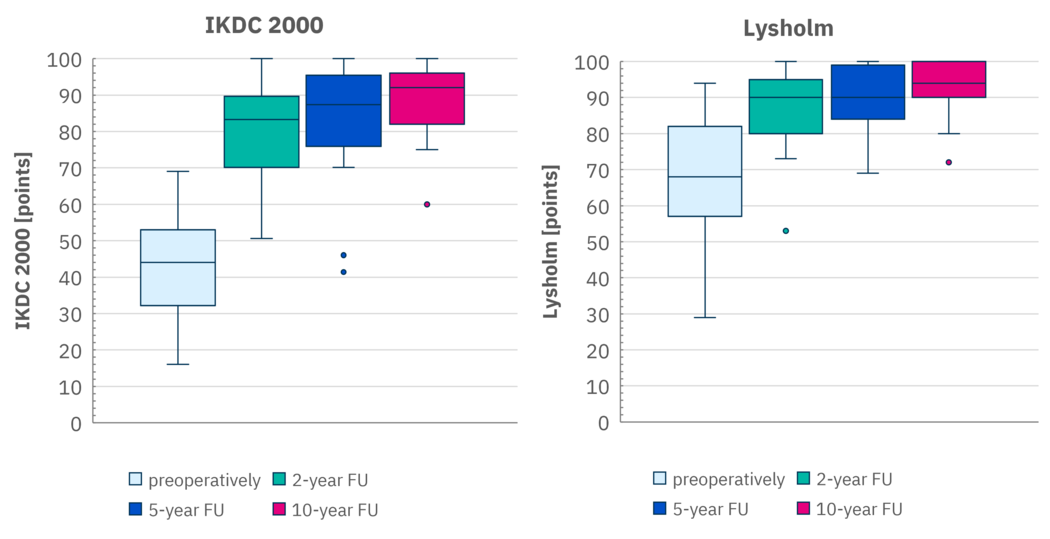
The improvement was sustained over the 10 year follow-up period and based on the MRT evaluation (WORMS), no further degenerative changes could be observed within the 10 years. Tear type and combination with ACL reconstruction had no influence on the clinical outcome.5
References
- Piontek, T., et al. All-arthroscopic technique of biological meniscal tear therapy with collagen matrix. Pol Orthop Traumatol. 2012 Jul 31;77:39-45.
- Jacobi, M., Jakob, R.P. Meniscal Repair: Enhancement of Healing Process. In: Beaufils, P., Verdonk, R. (eds) The Meniscus. 2010. Springer, Berlin, Heidelberg. https://doi.org/10.1007/978-3-642-02450-4_17
- Piontek, T., et al. Complex Meniscus Tears Treated with Collagen Matrix Wrapping and Bone Marrow Blood Injection: A 2-Year Clinical Follow-Up. Cartilage. 2016 Apr;7(2):123-39. doi: 10.1177/1947603515608988. Epub 2015 Nov 30.
- Ciemniewska-Gorzela, K., et al. Complex Meniscus Tears Treated with Collagen Matrix Wrapping and Bone Marrow Blood Injection: Clinical Effectiveness and Survivorship after a Minimum of 5 Years' Follow-Up. Cartilage. 2021 Dec;13(1_suppl):228S-238S. doi: 10.1177/1947603520924762. Epub 2020 Jun 1
- Bąkowski, P., et al. Meniscus repair via collagen matrix wrapping and bone marrow injection: clinical and biomolecular study. Int Orthop. 2023 Feb 11. doi: 10.1007/s00264-023-05711-2. Epub ahead of print. PMID: 36764942.

